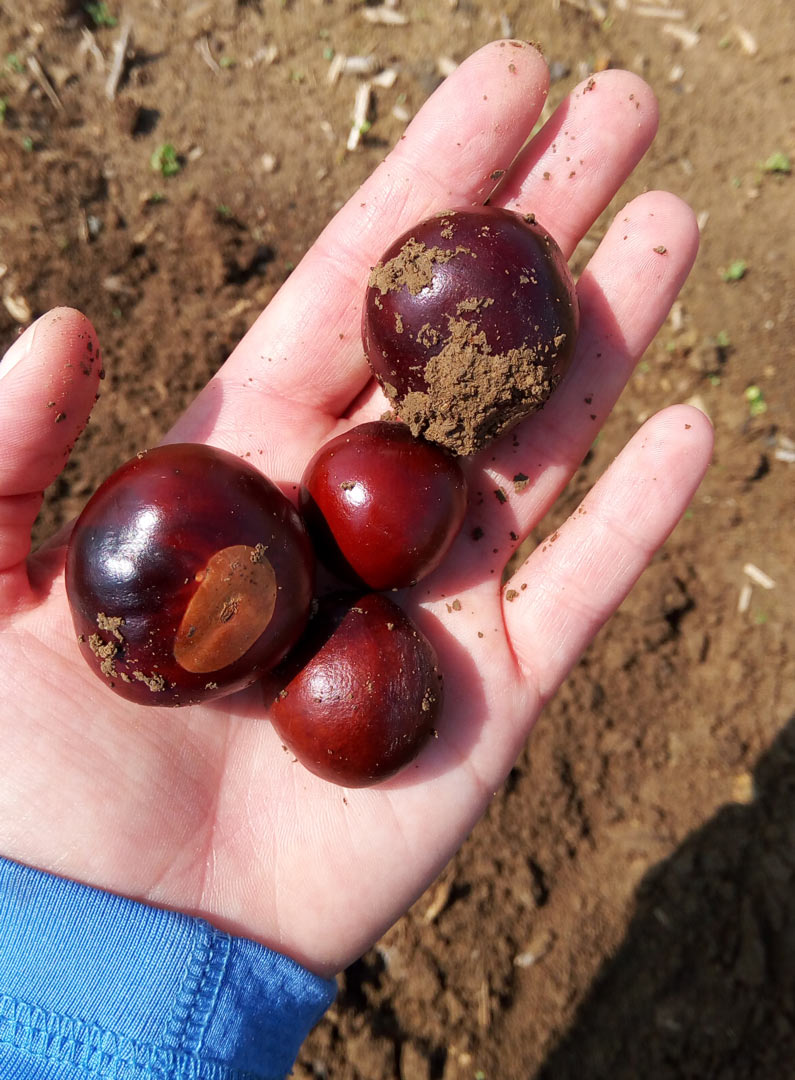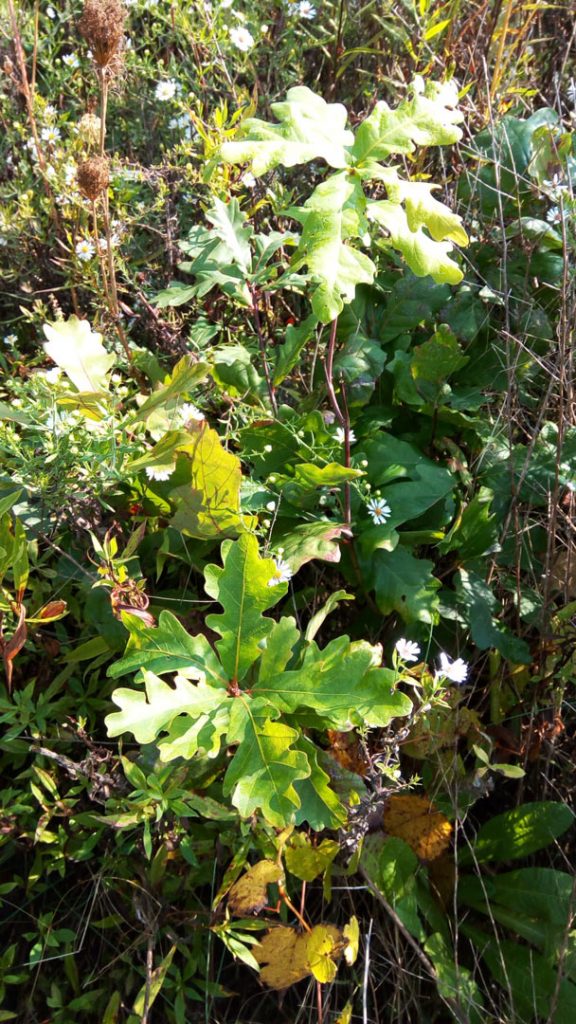ALYSSA BALTER, Restoration Ecologist

Direct seeding of nuts offers a simple, cost-effective supplement to Metro Park’s reforestation efforts and has been an annual activity for nearly 20 years. This process is typically used to expedite tree establishment in small pockets between existing forest, which is much faster than natural seed dispersal. The focus for direct seeding this fall will be in a new parcel of Prairie Oaks Metro Park. Approximately 1,800 pounds of nuts will be planted in a small portion of this former agriculture field, which is being transformed into a 190-acre complex of wetlands, prairie, savanna and forest.
Once a property is taken out of agriculture, the race to establish native habitats begins. If left alone, old corn and bean fields quickly become dominated by invasive species like bush honeysuckle, autumn olive and callery pear. Most native plants can’t compete with these aggressive exotic invaders, thus immediate action and long-term maintenance is required to give valuable habitats a chance to grow.
After a few repetitions of mowing and spraying, a field is ready for nuts. A variety of hardwood mast trees (like oaks and hickories) are usually selected for planting, but other tree and shrub species are also planted to provide habitat diversity and match growing conditions at the site. A tractor-pulled tandem disc is used to disturb the top few inches of soil and nuts are thrown in between the front and rear blades. The front blades expose the soil and the rear blades toss just enough soil back over the nuts to provide good coverage. With just a few days of fall work, 30 acres or more of weedy field will be lush with tree seedlings in the spring.
PHOTO GALLERY

A tandem-disc machine used for the nut planting. Front blades till the soil, nuts are thrown between the front and rear blades, and rear blades toss soil back over the nuts. (tractorbynet.com)

Just a few (of the hundreds of pounds of) buckeye seeds planted at Prairie Oaks. (Alyssa Balter)

A young oak tree planted by direct seeding in 2014. (Alyssa Balter)
US Dept of Agriculture PDF, with more information about direct seeding
